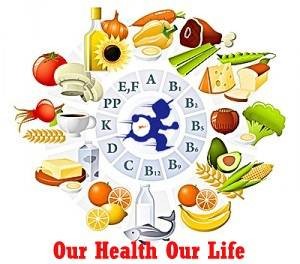Supplementary feeding encompasses all foods other than milk or formula that integrate child’s diet from four to six months of life, such as cereals, fruits, vegetables, meats, etc. Milk or formula should continue not supplied in quantities of less than half a liter daily to ensure adequate intake of calcium (500 mg per day) which allows correct mineralization of the skeleton.
Supplementary feeding should not contain gluten until the infant has served at least six months.
Between each new food that is included it must pass a range of approximately a week’s time, in order to assess the child’s tolerance against it.
Water should be offered between meals and after them, especially if there is fever or hot days.
It is advisable to add salt to food during the first year of life.
You should not enter any food in food list without the advice of your pediatrician.
[ads]
Here some effective food for supplementary feeding.
1. Cereals or crop.
Pediatric Nutrition in this term refers to flour or products extracted from certain seeds of grasses (rice, corn, wheat, etc.) and some legumes (soybean) and tubers (tapioca).
They are the first step of supplementary feeding characteristics being its fluid consistency (porridge), good acceptance and ease of swallowing.
They represent an important source of energy for its rich in complex carbohydrates. Although not contain many lipids, they provide a certain amount of polyunsaturated fatty acids, thiamine, mineral salts and some protein.
The flour can be mono or multigrain. Both will be subjected at its manufacture to thermal and enzymatic treatments to facilitate its preparation.
Flours may also occur alone or with added milk formula, other protein components, fruits, vegetables, etc. Lacteadas when they are dissolved in water while if they contain only be mixed with cereal formula.
If the child is breastfeeding, it is best to cereals with spoon not a bottle.
Commercial preparations must meet recommended by expert commissions requirements.
2. Fruit.
They are rich in vitamins (in particular vitamin C citrus), sugars, water, minerals and fiber.
They are administered in the form of porridge domestic clothing (without adding sucrose) or as industrial preparations. Typically they include bananas, apples, oranges, etc.
3. Vegetables.
They provide various vitamins, minerals, variable amounts of carbohydrates, some lipids, proteins and water. Also mean a significant supply of fiber, important not only for the regulation of bowel motility but also for modulation of cholesterol metabolism
They are used as homemade purees with no added salt as industrial products. Usually integrated child’s diet associated with meat or fish from six months or less. But then taking care to exclude foods rich in nitrates (spinach, cabbage, beets), the danger of methemoglobinemia.
In principle, they give very ground and as they progress masticatory function and swallowing solids is gradually increasing its texture to prevent rejections of whole foods in the weeks or months ahead.
4. Meat, fish and egg.
The nutritional importance of meat lies in being an excellent source of protein and iron, although iron absorption is probably less in food than when fasting alone and ferrous sulphate is administered.
Meats should contain little fat (skinless chicken, beef, etc.) and are often mixed with vegetable purees dependent quantities of the proteins ingested with the infant milk formula. They usually begin to be administered in portions of 25-30 g per day.
Fish provide nutritionally important fatty acids and also contain good quality protein but as the egg are very antigenic, so these two foods are usually the last to be included in the baby’s diet. Fish are administered in amounts similar to meat, and alternately with it. Not be introduced until 9-10 months.
The egg will always cooked in quantity not exceeding half yolk twice a week and from the tenth month. The egg is not introduced until after one year of life.
Legumes are introduced from the first year.
The viscera (liver, brain, etc.) should not be part of complementary feeding, among other reasons for its high content of saturated fat.
5. Commercial preparations.
It is the industry prepared fruits, vegetables, meat, eggs, fish, etc. Due to its huge variety in the market, it is virtually impossible to specify the recommended amount for each type nutrients, but have made comprehensive recommendations on energy density, protein and sodium.
Power: higher than 70 kcal / 100g.
Proteins: 4.2 to 6.5 g / 100 kcal.
Sodium: 10 mEq / 100 kcal.
Preparations only contain meat or fish should provide a minimum of 6.5g protein / 100 kcal, because they must be mixed with vegetable protein with small quantities and low biological quality. Instead, it is sufficient that the full plates containing about 4.2 g / 100 kcal.
With respect to sodium, should not exceed 10 mEq / 100 kcal to avoid dangerous intakes of salt.
All these preparations are sold in jars, and its consistency ranges from a complete crushing up getting thicker textures.
Containers once opened should be consumed immediately or stored in the refrigerator for a maximum of 48 hours.








Your style is really unique compared to other folks I’ve read
stuff from. Thank you for posting when you have
the opportunity, Guess I’ll just bookmark this web site.
Thank you, I have recently been looking for info approximately this subject for a long time and yours is the best I have came upon till now. However, what about the bottom line? Are you certain in regards to the supply?